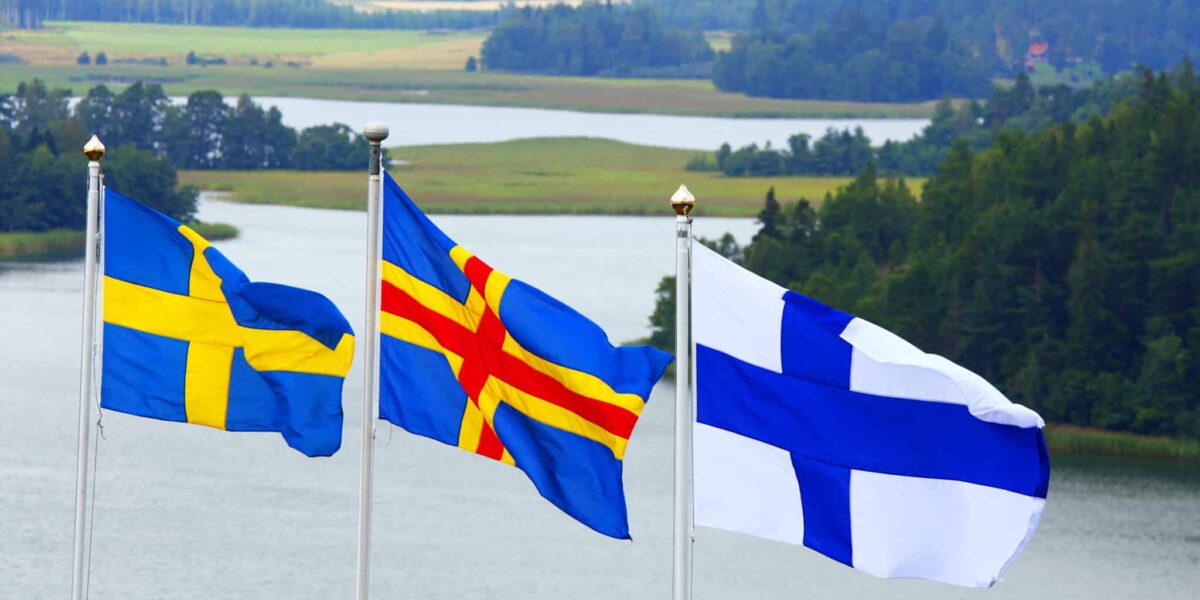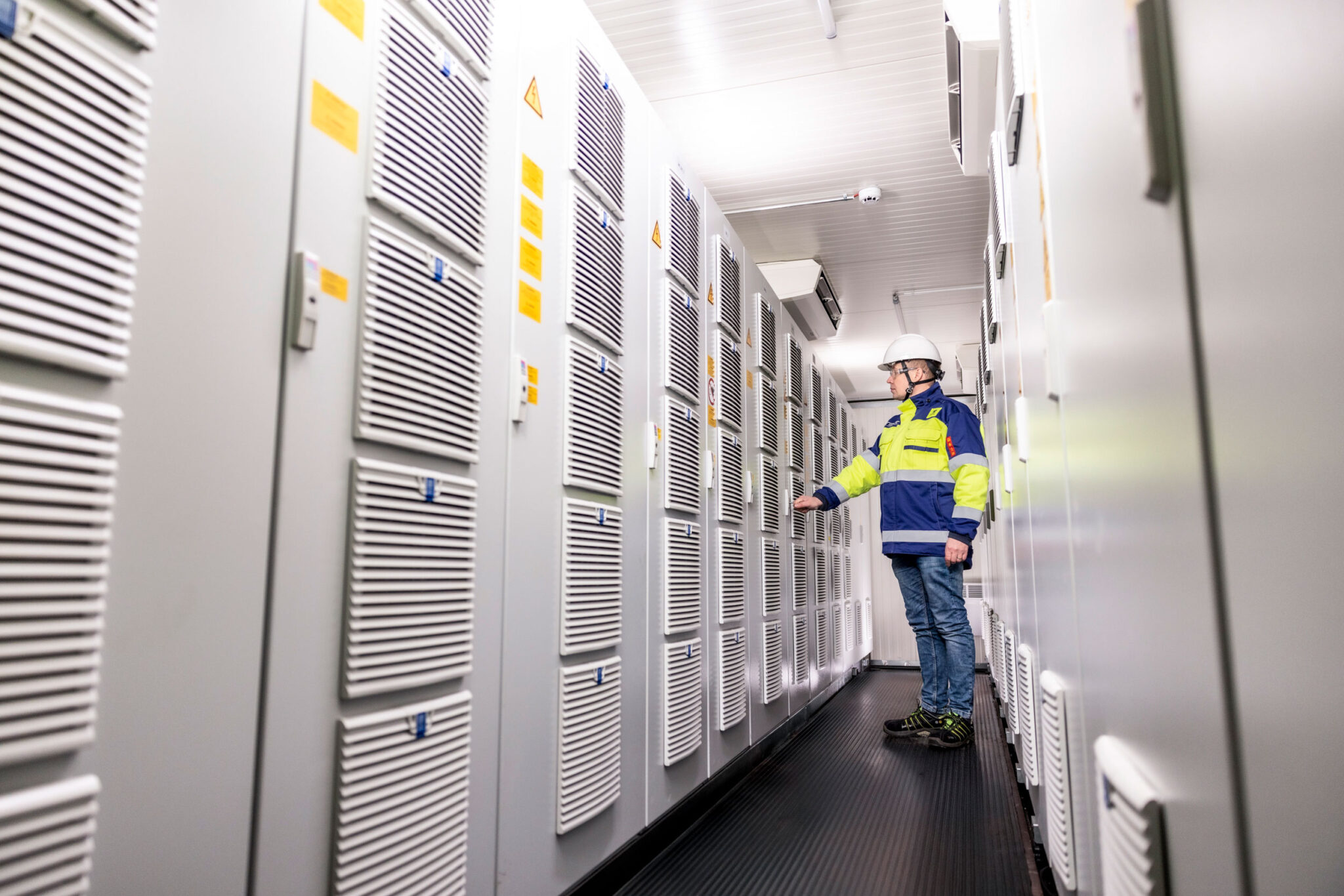Last winter was mild in Åland, so electricity consumption was lower than usual. High temperatures and high electricity prices kept consumption down.
“We were prepared to respond to any power outages, but there was no need for special measures because we had enough electricity all winter,” says Conny Rosenberg, CEO of Kraftnät Åland.
Kraftnät Åland is a completely independent transmission system operator that maintains the electricity network and offers electricity transmission services in Åland, just as Fingrid does in mainland Finland.
Åland’s power grid comprises a total of approximately 300 kilometres of lines, along with substations, cross-border connections, and IT systems. There are also connections to the mainland: one submarine cable to Sweden and two to mainland Finland.
Wind power and imported electricity from Sweden
Wind power produced in Åland covers about 65 per cent of the region’s annual electricity consumption. When it is very windy, there is even a surplus of wind power, which can be sold to Sweden. Solar power and a small amount of bioelectricity are also available. In a pinch, Åland can start up two gas turbines fuelled by diesel oil.
In addition to its own production, Åland buys electricity from Sweden.
In addition to its own production, Åland buys electricity from Sweden, as it is closer to Åland than mainland Finland.
A 58-kilometre-long submarine AC cable stretches between the substations in Senneby, Sweden and Tellholm, Åland, connecting Kraftnät Åland to the Swedish electricity network operated by Vattenfall Regionnät.
“Åland has mainly bought electricity from Sweden ever since the first submarine cable was laid to Sweden in 1973,” Rosenberg says.
Reserve connection to Finland
Kraftnät Åland is also connected to Finland by a high-voltage DC cable stretching the 152 kilometres from Ytterby in Åland to Naantali in mainland Finland. This connection is activated automatically within a few seconds if the connection to Sweden is lost.
Reserve connection is only used in the event of disturbances.
This is a reserve connection that is only used in the event of disturbances. The same connection has occasionally supplied mainland Finland with power if Åland has had a surplus.
“For example, there was an outage in northern Finland last winter, so Kraftnät Åland transmitted electricity to mainland Finland via the Naantali connection,” Rosenberg says.
The same need could arise in the event of an electricity shortage in mainland Finland. Rosenberg says that under certain conditions, Åland could effectively help mainland Finland. He says that the Ytterby–Naantali cable could be used even more.
“It would be good to allow the market to access all the available capacity,” Rosenberg contemplates.
There is a second connection from Åland to Finland, joining the grid in mainland Finland via the archipelago. The connection has a low capacity, and it only enables electricity to be supplied to the archipelago and a small part of eastern Åland. It is mainly used in the winter to reduce the load on the cable to Sweden.
Destination: Sweden, via Åland?
Åland’s electricity connections to Sweden and Finland are independent of each other. If the need arises, each has enough capacity to supply all the electricity Åland needs.
Consideration has also been paid to whether mainland Finland could receive electricity from Sweden via Åland.
“Yes, it is technically possible. However, the existing connections have such limited capacity that the connection would not offer much power,” states Rosenberg.
If offshore wind power is developed in Åland’s waters, Rosenberg says that cables could be built to Sweden and Finland at the same time to enable electricity to be transmitted between the countries.
“No plans have been made for this, but the idea has been floated,” he confirms.
International cooperation alongside Fingrid
As mentioned above, the practical cooperation between Fingrid and Kraftnät Åland is mostly related to disturbances such as temporary electricity supply outages. The transmission system operators also work together by exchanging information and learning about each other’s operations.
Kraftnät Åland Ab is an officially registered transmission system operator in the European Union, so it is subject to all the same EU laws and regulations as Fingrid. It is involved in the European Network of Transmission System Operators for Electricity (ENTSO-E), which coordinates international cooperation.
“Our organisation is small – we only have 14 employees – so we cannot attend every international meeting or event. In many cases, Fingrid’s representative also represents Kraftnät Åland,” Rosenberg says.
In addition, Kraftnät Åland has an observer’s seat in the Nordic Regional Coordination Centre (RCC) for Nordic transmission system operators.
“Above all, Nordic cooperation provides us with plenty of information about matters such as
the development of the electricity market.”







